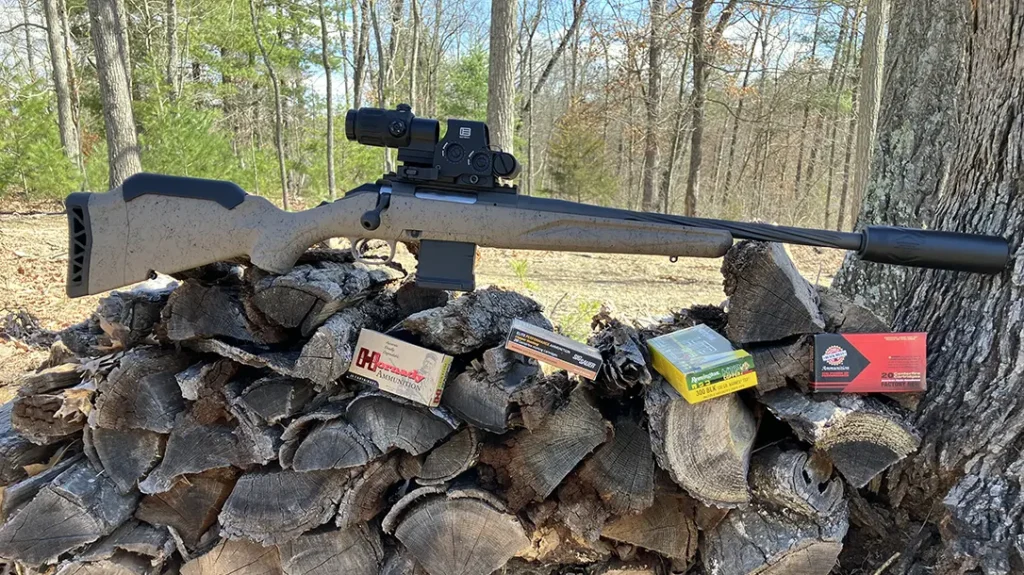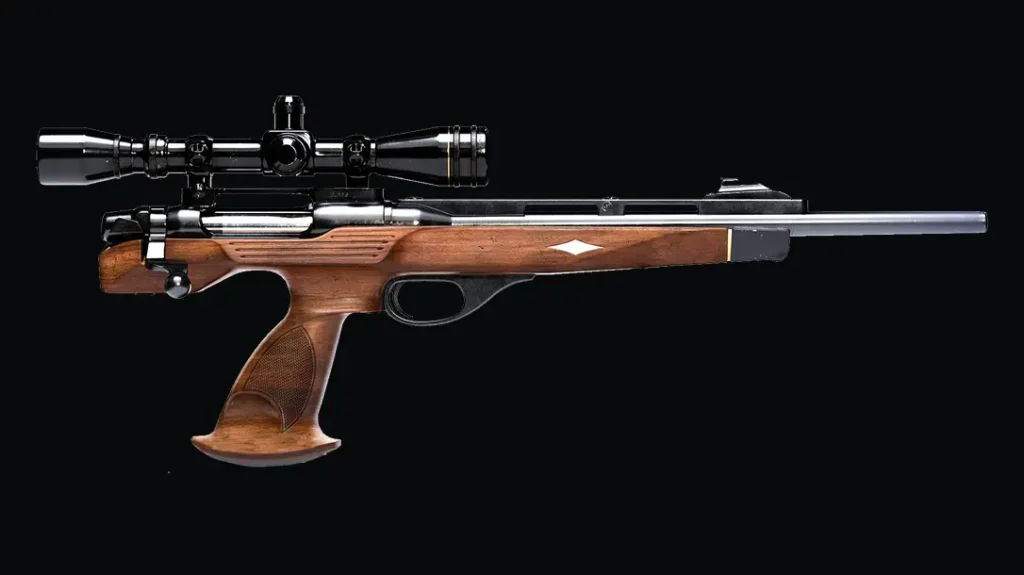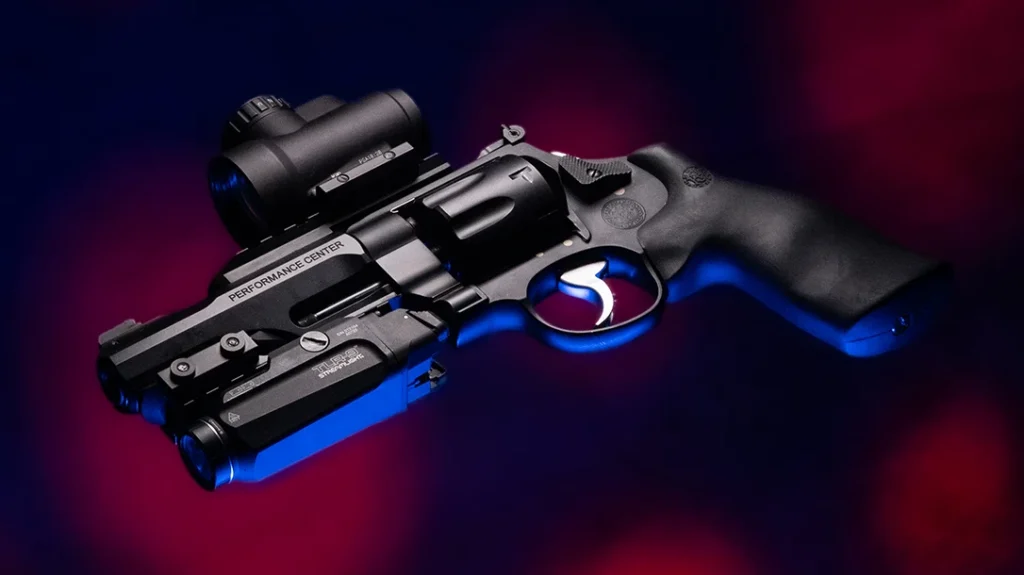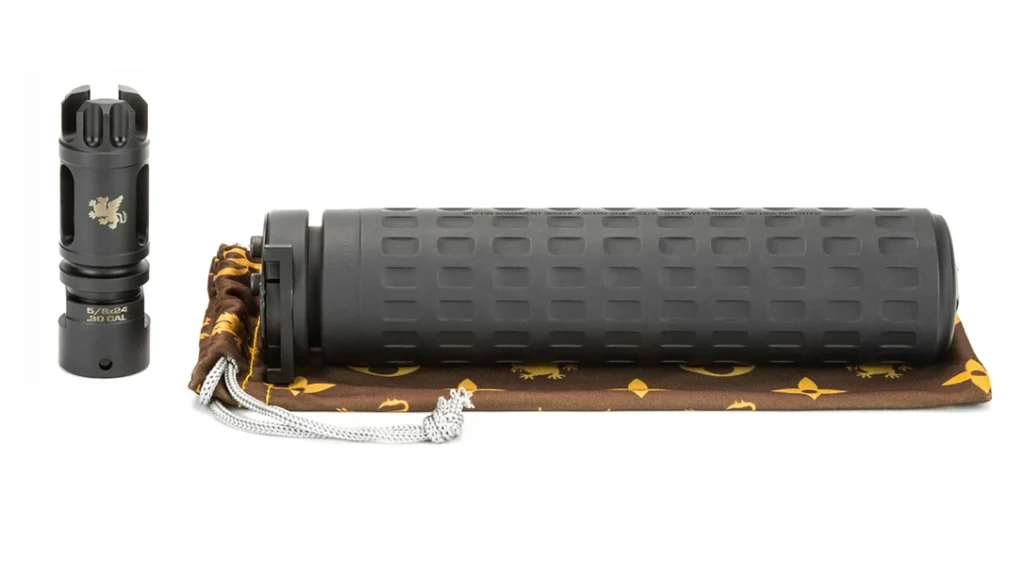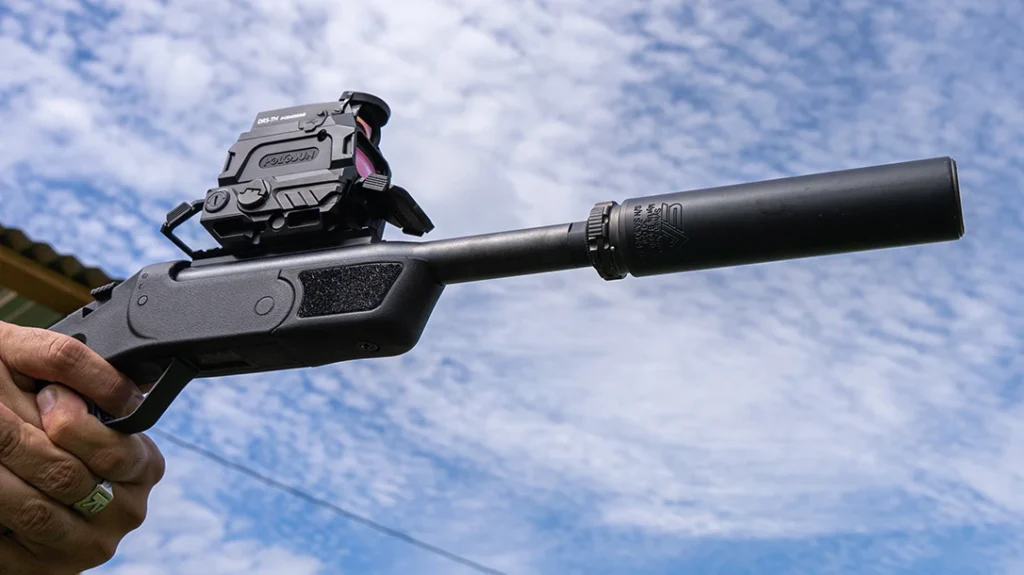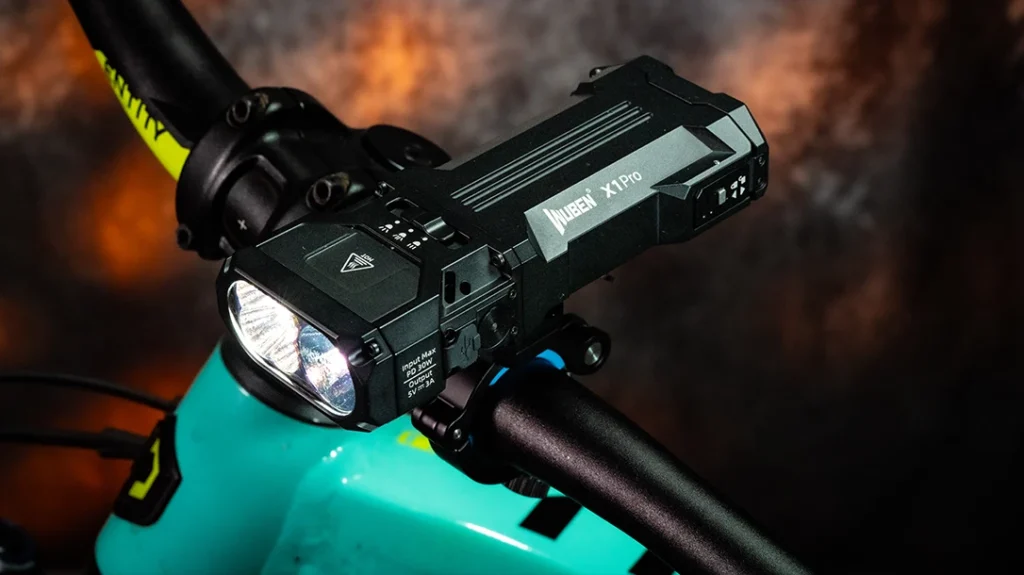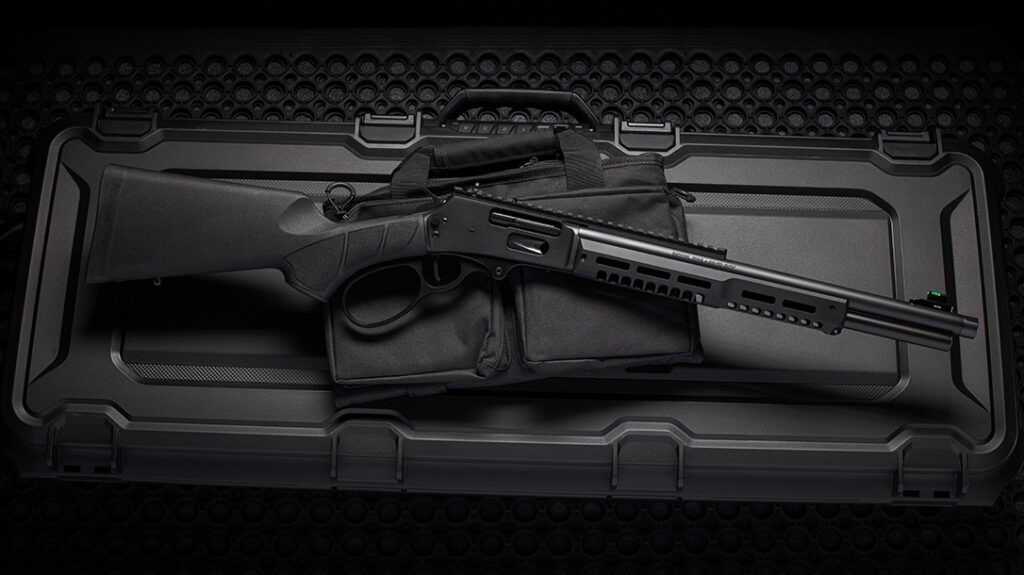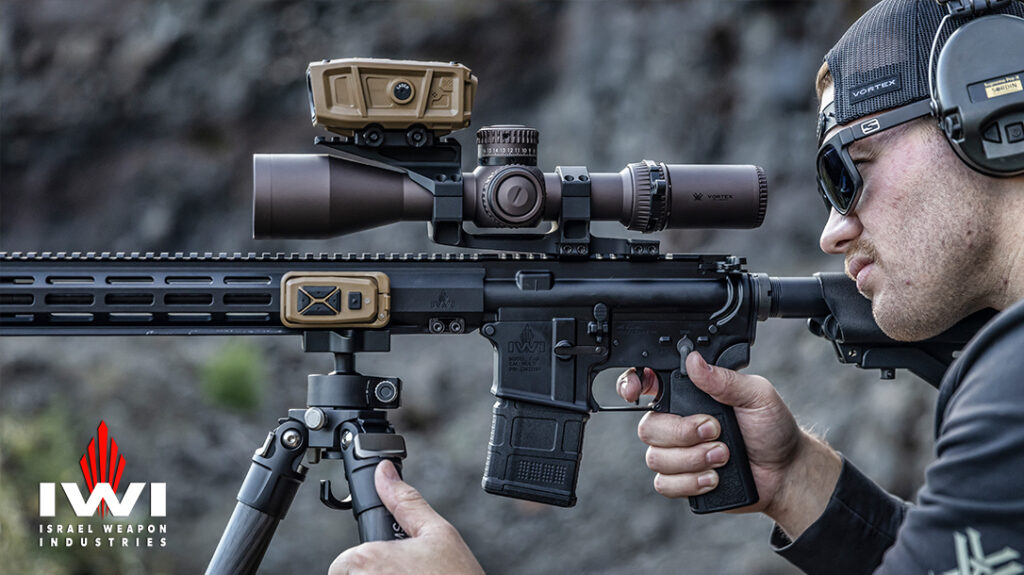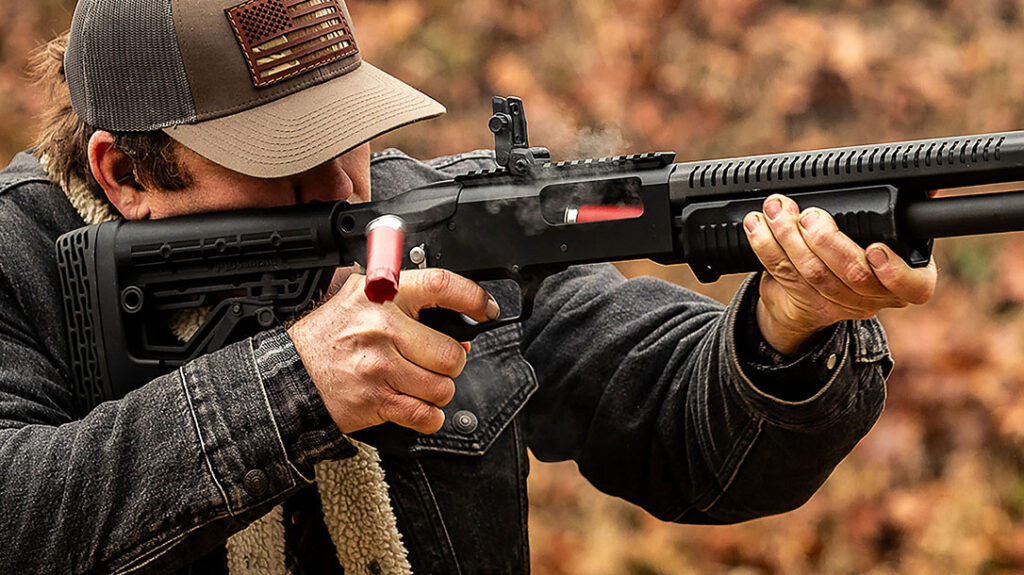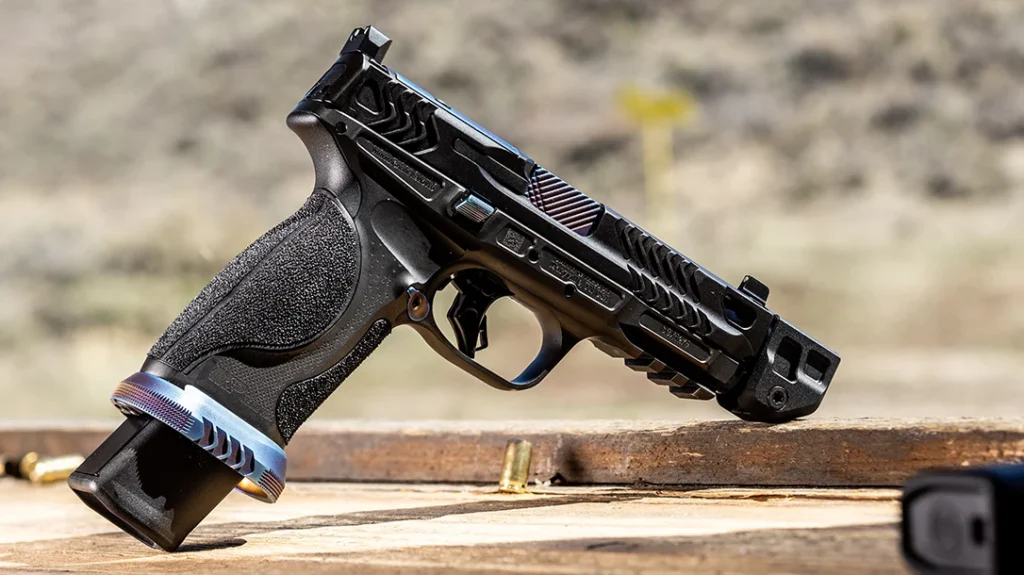Henry Repeating Arms started out in the lever action rifle space back in 1996 with their H001 Classic .22 Model.
Since then, the company has branched out big time. Now it produces pump-action rifles, rimfire/centerfire lever-guns, semi-auto survival rifles, shotguns and even double action revolvers.
When Henry rolled out the Homesteader PCC at the 2023 SHOT Show, I was taken back a bit. It seemed out of character for this company to offer a semi-automatic 9mm Luger pistol-caliber carbine (PCC). I even shot a few rounds through it at Industry Day at the Range, but at the time it just didn’t appeal to me. After reading glowing reports about its performance and seeing a new version when I toured the Henry factory in Rice Lake, Wisconsin earlier this year, I decided it was time to re-evaluate the Henry Homesteader.
Advertisement — Continue Reading Below
The Homesteader 9mm Brushed Bronze

Henry’s newest Homesteader variant replaces the blued-steel with a brushed bronze Cerakote finish. This finish provides an additional degree of ruggedness and durability compared to the basic blued steel finish. Besides looking good, the finish’s ceramic-based formulation has a reputation for resistance to wear, corrosion, chemicals and extreme temperatures. All metal surfaces of the Homesteader wear this modern finish. The furniture remains American Walnut.
Besides the new Cerakote finish, the latest version of the Homesteader has two M-LOK slots over the front of the forearm. Adding these M-LOK slots increases the versatility of the Homesteader overall. Using an interchangeable magazine well system, Homesteaders can feed from Glock, SIG Sauer or Smith & Wesson M&P handgun magazines. This only adds to their overall versatility.
Advertisement — Continue Reading Below
Henry Homesteaders can be had with two different barrel lengths. There’s a standard length of 18.66 inches, and a slightly shorter version with a 16.37 inch barrel. The latter’s muzzle has 1/2×28 threads for suppressed shooting.
The front sight is a ramped post, while the rear sight is a fully adjustable ghost-ring sight. Additionally, the top of the receiver is drilled and tapped for a Weaver 63 base.
The Henry Homesteader is ambidextrous. End-users can install the charging handle on the right side of the receiver via the ejection port–or on the left side of the receiver (there’s a slot for this purpose). Furthermore, the manual safety is tang-mounted, so that it can be engaged ambidextrously. If you stay with the factory magazines, the magazine catch is centrally located just forward of the magazine well. There’s also ambidextrous bolt hold-open levers at the front of the trigger guard.
Advertisement — Continue Reading Below
Homesteader’s Interchangeable Magazine Well System
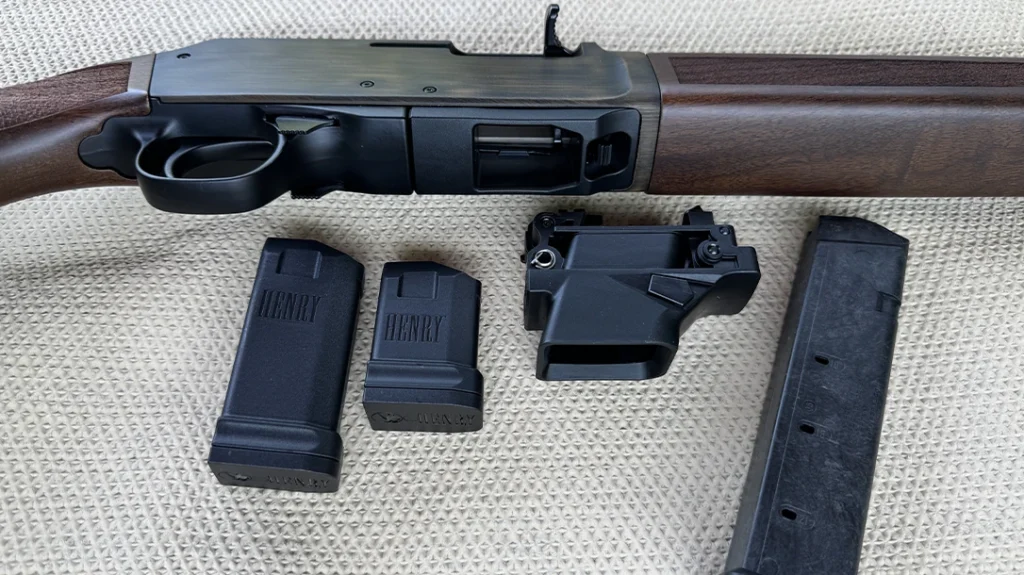
As a 9mm PCC, one of the Homesteader’s greatest strengths is the fact that it can feed from popular third-party magazines. Shooters don’t have to only rely on using Henry factory Homesteader magazines.
Using third-party magazines with the Henry Homesteader is accomplished driving out three cross-pins in the receiver. Then the trigger group/butt-stock assembly can be removed. There’s a groove in the rear of the trigger group that secures the butt-stock via a corresponding rail inside the rear of the receiver. Pop the magazine well front tab out of the receiver and swap out the different magazine wells; then reassemble in reverse order. Keep in mind that each style of magazine has its own magazine well. I have a vast supply of 9mm Glock magazines, so that’s the direction I took. With the Glock mag well, the release catch is now on the left side, and isn’t reversible.
Advertisement — Continue Reading Below
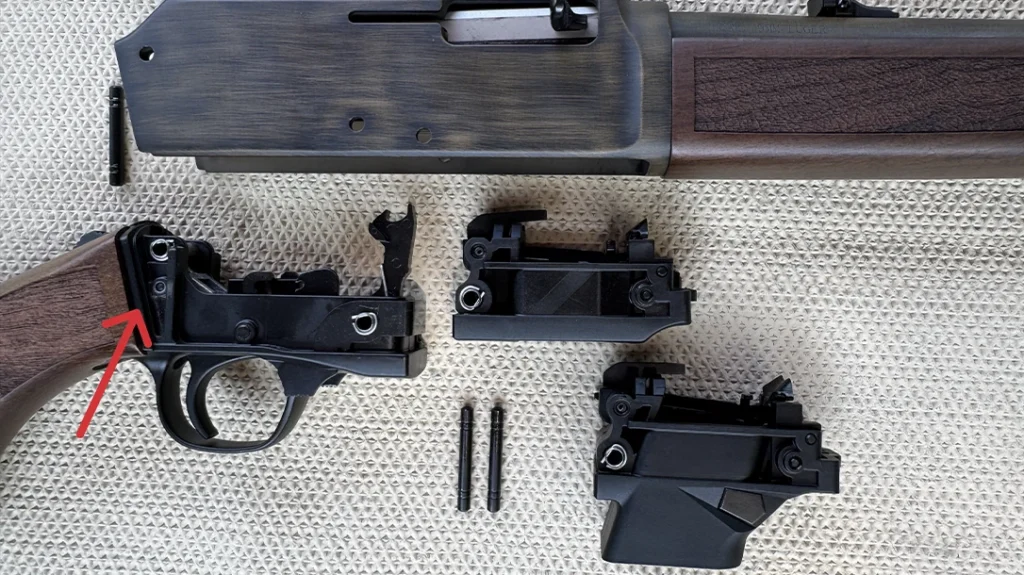
Prior to shooting, I gave the Homesteader the once-over from top to bottom and noted that metal to metal and wood to metal fit met my expectations for a Henry product, plus the Cerakote finish was evenly applied. There were no machine or tool marks visible to mar the metal surfaces. My Lyman electronic trigger-pull gauge recorded the average trigger pull at 6 Lbs. 11 oz. The trigger had a touch of take-up, but a clean break.
Prepping The Homesteader For The Range
I jumped on the Internet and found a set of Bontok Single Picatinny Aluminum Accessory Rails in a set for just over $10 with shipping. The smallest rail worked just fine in the Homesteaders M-LOK slots, and allowed me to mount my quick-detachable Safariland tactical light. Everything else, I left “stock.” For now, I skipped on mounting an optic and I’m sticking with the factory iron sights for my T&E.
Advertisement — Continue Reading Below
For the review I selected 5 different brands of 9mm Luger cartridges including Black Hills 124 grain JHP, Federal Syntech (purple) 124 grain TSJ, Hornady Subsonic 147 grain XTP-HP, HSM 115 grain JHP (loaded with Hornady XTP bullets) and Remington Range Clean 115 grain FP.
On The Range

My Henry Homesteader arrived just before the 2025 Shootists Holiday, held annually in the second week of June. SoI took it with me to the event for T&E. The Shootist’s Holiday is held at the NRA Whittington Center, just south of Raton, NM. I carried out my work at a smaller range at the complex.
Advertisement — Continue Reading Below
There, I set a target stand down-range at 25 yards and placed a Caldwell Orange Peel 12 inch bullseye target. I fired five rounds of each 9mm test load to get an average velocity with my Garmin Xero C1 chronograph. The longer barrel of the Homesteader produced higher velocities than a typical handgun; you can see the velocity figures in the performance table.
For my accuracy test, I stayed at 25 yards and used a sandbag rest and stapled up Birchwood Casey EZE-Scorer Double Bullseye targets. I fired three 5-shot groups with each brand of test ammo. From the 15 groups I printed, my best one measured 1.52 inches courtesy of the Remington 115 gr. Clean cartridges. Overall group average for all 75 rounds fired with the different loads was 1.84 inches. I also took 10 shots at 50 yards using a 12-inch Shoot-N-C target. All but one shot was low and left, hitting between 3 and 6 o’clock on the bullseye target. Not bad with iron sights and my rather aged eyeballs, plus a trigger just a bit on the heavy side.
Practical Matters
Besides accuracy, I also shot the Henry Homesteader in a practical capacity. I put up a TruGlo Gunslinger target that has a reduced-size “bad guy” silhouette, with scoring rings. Loaded my PMag 21-round Glock magazine with 20 rounds of mixed test ammo, and inserted it into the Homesteader mag well. Then chambered a round and applied the tang safety.
Advertisement — Continue Reading Below
My course began at 10 yards. When my shot-timer beeped, I disengaged the safety and peppered the target with 5 rounds as quickly as I could get a flash sight picture. I then performed the same drill at 15, 20, and 25 yards. At the furthest distance, I used my pickup truck for cover. All but one of my shots stayed inside the 9-inch oval center-mass scoring area. A stray bullet hit the bad guy in his left gun hand. I had no malfunctions.
For some plinking fun, I moved over to the Handgun Animal Silhouette range, where I used a mixed-bag of 9mm ammunition that I had lying around. I shot at steel Javelina silhouette targets positioned in a row at 50 yards. The black 16×12-inch peccaries were no match for the Homesteader and with each pull of the trigger, fell from their steel perch. I’m not sure how many rounds I had in that mixed-bag, but I shot them all.
Again, the Homesteader ran 100%. Magazines dropped out when the catch was pressed, empties ejected away from the shooter and fresh rounds fed without a bobble.
Advertisement — Continue Reading Below
Bringing It Home
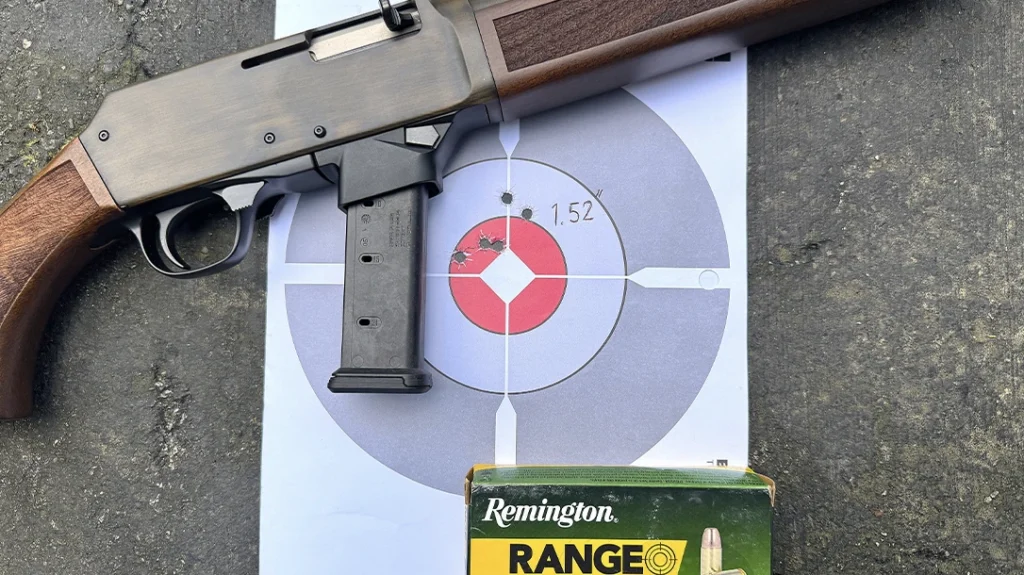
I was very pleased with the performance of this newest version of the Henry Homesteader. The only complaints I had were the rear sight. The aperture ring on the sight was so thin I had trouble getting the post front sight properly centered. My other qualm was the butt-stock. With iron-sights, the drop of the comb was not low enough to be useful, so I had to force my cheek down hard onto the stock to aim through that rear sight. I’m guessing it’s not a problem when shooting with optics.
At any rate, the Henry Homesteader will most certainly find a place in my home-defense, fun-gun arsenal.
Henry Homesteader M-LOK Brushed Bronze Specifications
MECHANISM: Blow-back, semi-automatic
CALIBER: 9mm
CAPACITY: 5 & 10 cartridges (w/ factory magazines)
BARREL: 16.37 in. w/ threaded muzzle and 1:10 twist
OA LENGTH: 35.75 in.
EMPTY WEIGHT: 6.6 Lbs.
SIGHTS: Adjustable aperture rear and ramped post front
FINISH: Brushed bronze Cerakote
FURNITURE: American walnut
MSRP: $1,149.00
Henry Homesteader 9mm M-LOK Brushed Bronze Performance
| Black Hills Factory New 124 gr. JHP | |
| Average Velocity | 1,286 FPS |
| Best Group | 1.58 inches |
| Average Group | 1.80 inches |
| Foot Pounds Muzzle Energy | 455 FPE |
| Federal Syntech 124 gr. TSJ bullet | |
| Average Velocity | 1,412 FPS |
| Best Group | 1.58 inches |
| Average Group | 1.79 inches |
| Foot Pounds Muzzle Energy | 549 FPE |
| HSM 115 gr. XTP-HP | |
| Average Velocity | 1,299 FPS |
| Best Group | 1.68 inches |
| Average Group | 1.73 inches |
| Foot Pounds Muzzle Energy | 431 FPE |
| Hornady Subsonic 147 gr. XTP-HP | |
| Average Velocity | 1,101 FPS |
| Best Group | 1.82 inches |
| Average Group | 2.23 inches |
| Foot Pounds Muzzle Energy | 396 FPE |
| Remington Range Clean 115 gr. FNEB | |
| Average Velocity | 1,320 FPS |
| Best Group | 1.52 inches |
| Average Group | 1.67 inches |
| Foot Pounds Muzzle Energy | 445 FPE |
NOTE: Bullet weight measured in grains, velocity in feet per second, 15” from the muzzle by a Garmin Xero C1 Pro chronograph, and accuracy in inches for three 5-shot groups at 25 yards

